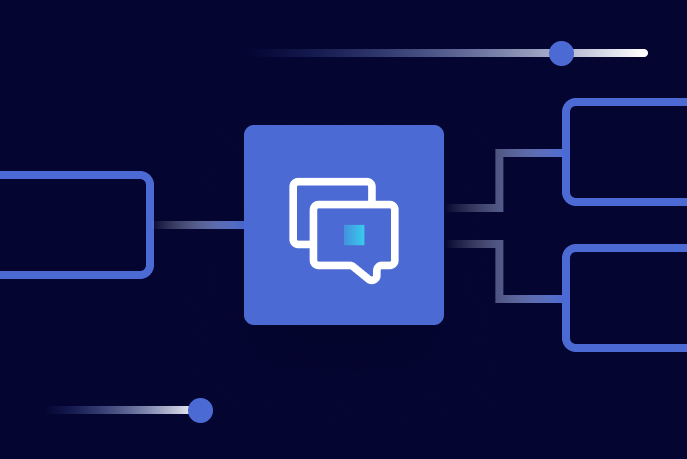Apache Kafka®️ 비용 절감 방법 및 최적의 비용 설계 안내 웨비나 | 자세히 알아보려면 지금 등록하세요
Technology
Data Products, Data Contracts, and Change Data Capture
Change data capture is a popular method to connect database tables to data streams, but it comes with drawbacks. The next evolution of the CDC pattern, first-class data products, provide resilient pipelines that support both real-time and batch processing while isolating upstream systems...
Unlock Cost Savings with Freight Clusters–Now in General Availability
Confluent Cloud Freight clusters are now Generally Available on AWS. In this blog, learn how Freight clusters can save you up to 90% at GBps+ scale.
Contributing to Apache Kafka®: How to Write a KIP
Learn how to contribute to open source Apache Kafka by writing Kafka Improvement Proposals (KIPs) that solve problems and add features! Read on for real examples.
How to Use Confluent for Kubernetes to Manage Resources Outside of Kubernetes
Learn how to use Confluent for Kubernetes to enable GitOps with a CI/CD pipeline and delegate resource creation to groups of people without distributing admin permission passwords to other people in the organization.
Confluent’s Customer Zero: Building a Real-Time Alerting System With Confluent Cloud and Slack
Turning events into outcomes at scale is not easy! It starts with knowing what events are actually meaningful to your business or customer’s journey and capturing them. At Confluent, we have a good sense of what these critical events or moments are.
Extending the Confluent CLI With Custom Plugins
Confluent offers a powerful CLI that lets you quickly create and manage Apache Kafka® clusters and Apache Flink® compute pools and all associated operations with both. The CLI now supports plugins that allow for custom commands and creation of dynamic workflows and automation.
Getting Started with OAuth for Confluent Cloud Using Azure AD DS
Learn how to configure Azure Active Directory DS (Azure AD DS) and Confluent Cloud so that the Azure Directory can be used to authenticate and authorize applications to use Confluent Cloud clusters.
Turbo-Charging Confluent Cloud To Be 10x Faster Than Apache Kafka®
At Current 2023, we announced that Confluent Cloud is now up to 10x faster than Apache Kafka®, thanks to Kora, The Cloud-Native Kafka engine that powers Confluent Cloud. In this blog post, we will cover what that means in more depth.
Simplify and Accelerate Your Data Streaming Workloads With an Intuitive User Experience
Our latest updates to Confluent Cloud focus on enabling customers to realize a seamless experience using our data streaming platform. With these improvements, we aim to provide a more streamlined and secure experience, allowing users to focus on leveraging real-time data to drive business outcomes.
Making Flink Serverless, With Queries for Less Than a Penny
Imagine easily enriching data streams and building stream processing applications in the cloud, without worrying about capacity planning, infrastructure and runtime upgrades, or performance monitoring. That's where our serverless Apache Flink® service comes in.
Enterprise Apache Kafka Cluster Strategies: Insights and Best Practices
As companies increase their use of real-time data, we have seen the proliferation of Kafka clusters within many enterprises. Often, siloed application and infrastructure teams set up and manage new clusters to solve new use cases as they arise. In many large, complex enterprises, this organic growth
Introducing Data Portal in Stream Governance
Today, we’re excited to announce the general availability of Data Portal on Confluent Cloud. Data Portal is built on top of Stream Governance, the industry’s only fully managed data governance suite for Apache Kafka® and data streaming.
A Deep Dive Into Sending With librdkafka
Learn how to interact with the librdkafka library when sending and how to handle errors correctly. Take a deepdive into the internal mechanics of the library.
Top 7 Free Apache Kafka Tutorials and Courses for Beginners in 2023
Stepping into the world of Apache Kafka® can feel a bit daunting at first. Get started with the top resources for beginners to start building your first Kafka application!
Build Streaming Apps Quickly with Flink SQL Workspaces
In this blog post, we will provide an overview of Confluent's new SQL Workspaces for Flink, which offer the same functionality for streaming data that SQL users have come to expect for batch-based systems.
Announcing Apache Flink 1.18
The Apache Flink PMC is pleased to announce the release of Apache Flink 1.18.0. As usual, we are looking at a packed release with a wide variety of improvements and new features. Overall, 174 people contributed to this release completing 18 FLIPS and 700+ issues.
Getting Started with Generative AI
This series of blog posts will take you on a journey from absolute beginner (where I was a few months ago) to building a fully functioning, scalable application. Our example Gen AI application will use the Kappa Architecture as the architectural foundation.







